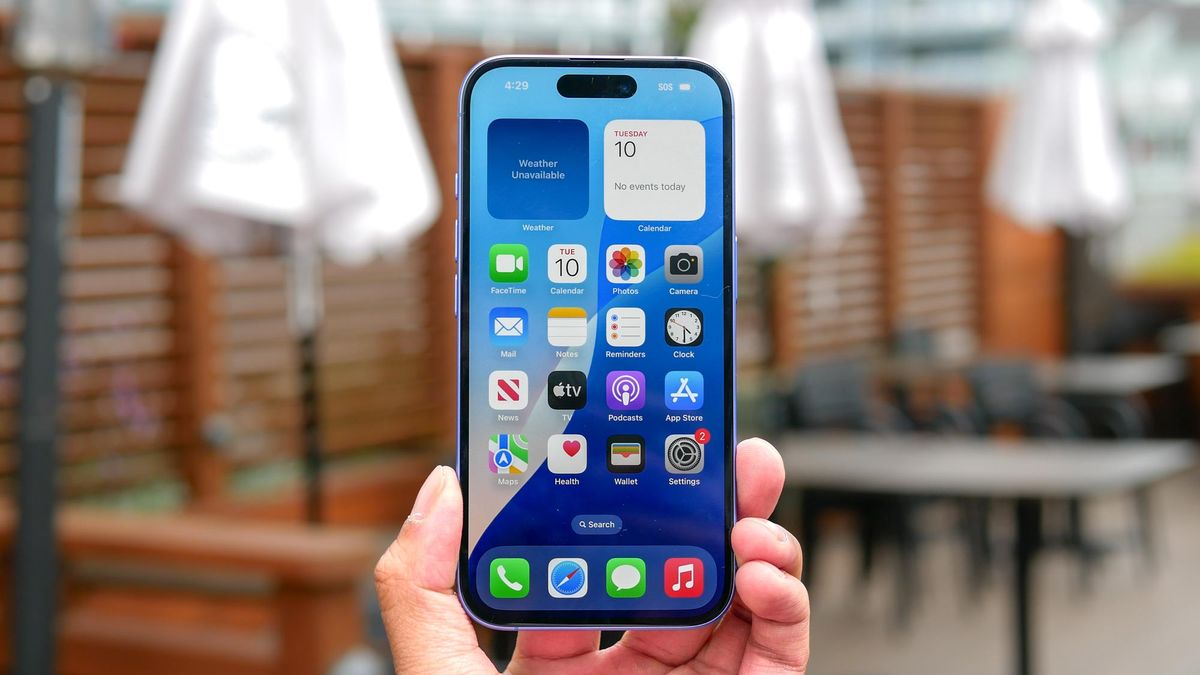Revive the Classic Calling Experience: How to Get Full-Screen Calls on Your iPhone
In the era of selfies and group chats, the traditional full-screen call has become a nostalgic memory of the past. Gone are the days when you could gaze into the eyes of your loved ones on a single, uninterrupted screen. But fear not, iPhone users! Gizmoposts24 has got the scoop on how to bring back the classic full-screen calling experience on your device, just like the good old days.

Bring Back Full-Screen Calls on iPhone: A Step-by-Step Guide
iPhone users may have noticed that incoming calls are harder to spot after Apple changed how they appear on unlocked devices. Instead of interrupting whatever you were doing by filling the screen with the alert, it switched to a less intrusive banner which could be easily missed. And that’s not great if you’re expecting an important call.
Fortunately, you can easily bring back full-screen incoming call alerts on your iPhone. Here’s how:
Accessing the Settings
To access the settings, open the Settings app on your iPhone and select Apps at the bottom of the screen.
Then, scroll down and tap Phone. This will take you to the Phone settings, where you can customize various settings related to calls, including how incoming calls are displayed.
Once you’re in the Phone settings, tap Incoming Calls. It should say Banner next to it, as this is how iPhone currently displays incoming call alerts at the top of the screen.
Toggling the Option
To bring back full-screen incoming call alerts, select Full Screen. This will toggle the option, and you’ll see a confirmation message indicating that the change has been made.
That’s it! You can now tap Phone to go back and quit the Settings app.
With this change, incoming call alerts will once again fill the screen, making it harder to miss important calls.
Immediate Impact
One of the benefits of bringing back full-screen incoming call alerts is that it can help you stay more focused on your work or other activities while still being aware of incoming calls.
However, some users may find that the full-screen alert can be distracting or interruptive, especially if you’re in the middle of a critical task or meeting.
To mitigate this, you can also explore other settings and features within the Phone app to customize your calling experience.
Beyond the Banner: Customizing Your iPhone Calling Experience
While bringing back full-screen incoming call alerts can be helpful, there are several other settings and features within the Phone app that can help you customize your calling experience.
Here are a few options to consider:
- Caller ID: This feature allows you to see the caller’s name and number before answering the call. You can also block or silence specific callers if you choose.
- Do Not Disturb: This feature allows you to silence incoming calls and notifications during certain times of the day or while you’re in a meeting.
- Call Waiting: This feature allows you to see a second call waiting in the background while you’re on a call.
- Use Siri: Siri can help you make calls, send messages, and perform other tasks hands-free.
- Use Bluetooth: Bluetooth can help you make hands-free calls and listen to music while driving or exercising.
- Use Wi-Fi Calling: Wi-Fi calling can help you make calls over Wi-Fi, which can be helpful in areas with poor cellular coverage.
Prioritizing Important Calls
With the options above, you can prioritize important calls and customize your calling experience to suit your needs.
For example, if you have a meeting scheduled, you can silence all incoming calls and notifications during that time using Do Not Disturb.
Alternatively, if you’re expecting an important call, you can use Caller ID to see the caller’s name and number before answering.
Making Calls Work for You
Finally, there are several tips and tricks you can use to optimize your calling experience on iPhone.
Other Settings and Features to Explore
There are several other settings and features within the Phone app that can help you customize your calling experience.
Here are a few options to consider:
- Call Forwarding: This feature allows you to forward calls to another number, such as a voicemail or another phone.
- Call Waiting: This feature allows you to see a second call waiting in the background while you’re on a call.
- TTY Mode: This feature allows you to use a teletypewriter (TTY) to communicate with individuals with hearing or speech disabilities.
Customizing Your Ringtone
Another option to explore is customizing your ringtone. You can choose from a variety of pre-installed ringtones or create your own custom ringtone using GarageBand or another music editing app.
To customize your ringtone, go to the Settings app and select Sound. Then, tap Ringtone and select a new ringtone from the list.
Alternatively, you can create your own custom ringtone by recording a sound or music file using GarageBand or another music editing app.
To do this, go to the GarageBand app and select Loop to create a new project. Then, record a sound or music file and export it as a ringtone.
Once you’ve created your custom ringtone, go to the Settings app and select Sound. Then, tap Ringtone and select your custom ringtone from the list.
Conclusion
Restoring a Classic Feature: Bringing Back Full-Screen Calls on iPhone
In our latest article, we delved into the steps to revive a beloved feature on the iPhone – full-screen calls. With the guidance from Tom’s Guide, readers learned how to ditch the recent update’s changes and restore the classic full-screen experience. The article highlighted the simple yet effective methods to disable the Picture-in-Picture (PiP) mode, allowing users to return to the iconic full-screen calls that many had grown accustomed to.
The significance of this topic lies in its impact on user experience and the nostalgic value it holds for many iPhone enthusiasts. The ability to customize and personalize the iPhone’s features is a crucial aspect of its appeal, and the article’s solution provided readers with the power to reclaim their preferred way of making and receiving calls. This development also underscores the importance of listening to user feedback and adapting to changing user needs. As technology continues to evolve, it will be interesting to see how Apple responds to user demands and integrates user-centric features into its future updates.
As we look to the future, it’s clear that the iPhone’s adaptability and customization options will remain a key differentiator in the smartphone market. The ability to bring back full-screen calls is a testament to the power of user-driven innovation and the importance of giving users the freedom to shape their iPhone experience. As we continue to navigate the ever-changing landscape of mobile technology, one thing is certain – the future of the iPhone will be shaped by the collective voice of its users, and we can’t wait to see what’s next.


Add Comment